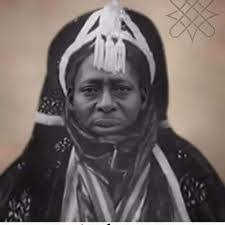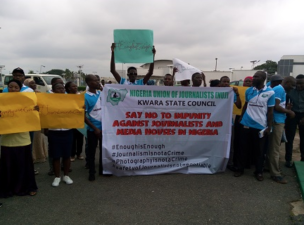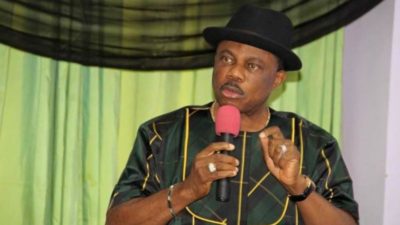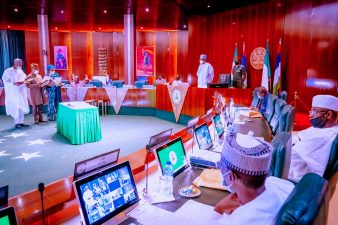By DR.MAHMOUD DANTSOHO
This special piece is a tribute to the late Emir of Zazzau Malam Ja’afaru Dan Isiyaku Dan Abdullahi Dan Hammada Dan Yamusa, the sixteenth Emir of Zazzau who passed away on Friday, August 21st 1959. To day is exactly sixty-four years since he left this world. Sarkin Zazzau, Limamin-gari, Alkalin-gari, builder of modern Zazzau Emirate, the embodiment of humility and leadership. In fact, let truth be told, records have shown that Emir Malam Ja’afaru had never in his reign as Emir to publically humiliate or disgraced his subjects or his perceived adversary royal ranks. He had never betrayed the royal confidence reposed in him by the four royal dynasties and he was always amending fence between the ruling dynasties. However before going into the subject matter, it is pertinent to state that quite a lot has been written, said and still people are saying good things about Emir Malam Ja’afaru Dan Isiyaku in Zaria and beyond. In fact, no Emir of Zazzau had enjoyed such a feast from 1903 to date. He was a beacon of peace and comfort to his subjects and all the four ruling dynasties in Zazzau Emirate.
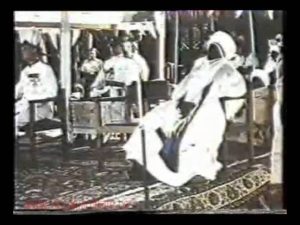
To those who do not know, Zazzau Emirate is located in the Northwest of Nigeria in the present-day Kaduna State and north of the state. For centuries, it has been a land of diversity and it retained this unique heterogeneous nature even before the Sokoto Caliphate, colonial administration and post-independence period of Nigeria. The Emirate has served as a bridge and is still serving as a political, economic and cultural centre of importance to the geostrategic corridor of Hausaland for the flow of goods, services and ideas from the North to South as well as South to North of present-day Nigeria. The hospitality of its people and the leadership styles of its Emirs are some of the raison d’être that attract people to the Emirate.
The position Zazzau is occupying now is naturally not by accident but through the hard work and foresight of its past leaders’ right from the 16th century, when the legendary Queen Amina completed the unification process of Zazzau state from settlement-centres to statehood down to the period of modern day Zazzau Emirate. However, the Emir that uniquely stands out, and extends the frontiers of a solid foundation of a modern heterogeneous and cosmopolitan Emirate, which subsequent Emirs built on was Sarkin Zazzau Malam Ja’afaru Dan Isiyaku Dan Abdullahi 1937-1959; the sixteenth Emir of Zazzau under the Fulani rule and the ninth Emir from the Barebari dynasty line; the fourth Emir of Zazzau to be crowned by the colonial government and the last to be installed by them in Zazzau Emirate in 1937. And the first Katukan Zazzau to ascended the throne of Zazzau since then!
Malam Ja’afaru Dan Isiyaku Dan Abdullahi Dan Hammada Dan Yamusa ascended the throne of the Zazzau Emirate midway into colonial rule in Northern Nigeria in 1937. His enthronement as Emir of Zazzau marked a watershed and a defining period in the Emirship rule in Zazzau Emirate in view of the great changes that were taking place in the colonized world. It was also a period when new colonial policies in Africa were taking shape and great depression of 1930s was overcome. Similarly, it was a period, when the colonial administrators, especially Great Britain were disturbed by Adolf Hitler of Germany war drum beat. Also, it was during his reign in Zazzau that the British administrators sought the cooperation and support of traditional rulers towards mobilizing Africans to participate in the World War Two. Ja’afaru’s ascension to the throne of Zazzau coincided with the period, when African nationalists such as Zik, Awalowo, Abubakar Tafawa Balewa, Sir Ahmadu Bello, Sa’ad Zungur and Malam Aminu Kano to mentioned but few were agitating for participation in colonial administrations in Northern Nigeria in particular and Nigeria in general. It is also instructive to note that Malam Ja’afaru Dan Isiyaku ascended the throne of Zazzau barely a year when Sultan Hassan Dan Mu’azu passed away and Sir Abubakar Dan Shehu Usman III emerged as the new Sultan of Sokoto in 1938. Ja’afaru’s appointment from the title of Katukan Zazzau was the third successive appointment to the throne by the British from offices which had not previously supplied Zazzau with any Emirs. Therefore, Malam Ja’afaru by his appointment as Emir with the title of Katukan to ascend the throne of Zazzau had increased the qualification of it holders to the throne of the royal ranks.
Malam Ja’afaru Dan Isiyaku remained the first longest reigning Emir in Barebari dynasty line with twenty-four years and some months as Emir and the second longest reigning Emir of Zazzau after Sarkin Zazzau Alhaji Shehu Idris with forty-five years since the establishment of the Emirate system of government from 1808 to date. Also, Ja’afaru’s grandfather Abdullahi Dan Hammada, who ascended the throne of Zazzau with the title of Madakin Zazzau is the third longest reigning Emir with twenty-one years while Sarki Alu Dan Sidi of Mallawa dynasty is the fourth longest reigning Emir in Zazzau with seventeen years on the throne and closely followed by Emir Alhaji Muhammadu Aminu of Katsinawa dynasty with fifteen years clinching the fifth position as the longest reigning Emir in Zazzau.
Indeed, the ascension to the throne of Zazzau Emirate by Mallam Ja’afaru Dan Isiyaku marked a turning point in the history of Emirship in Zazzau as he remained the first Emir to ascend the throne as a grandson of Emir rather than being a direct son of Emir since the establishment of Zazzau Emirate in 1808 by Mujahidun. Since that time, the successive Emirs that followed him are all grandsons of Emirs. Thus, Emir Alhaji Muhammadu Aminu Dan Abubakar the immediate successor of Mallam Ja’afaru Dan Isiyaku was the great grandson of Sarki Abdulkarim, the founder of Katsinawa dynasty in Zazzau. Emir Alhaji Shehu Idris also of Katsinawa dynasty, who succeeded Muhammadu Aminu, was the grandson of Emir Muhammadu Sambo. The last but not the least on the list of grandsons that ascended the throne of Zazzau is the present Emir Malam Ahmad Nuhu Bamalli of the Mallawa dynasty who is the great-great grandson of Mallam Musa Bamalli, the founder of Mallawa dynasty and the first Fulani ruler of Zazzau. Therefore, in the last sixty four years, it has been only grandsons ascending the throne of Zazzau; a gate opened by Mallam Ja’afaru Dan Isiyaku.
Mallam Ja’afaru Dan Isiyaku, being the precursor of all grandsons of Emirs that ascended the throne of Emirship in Zazzau Emirate to date, became a reference point in the criteria of selection of Emirs in Zazzau Emirate, especially if reasons that contributed to his appointment are put into consideration. Some of these reasons that contributed to the appointment of Mallam Ja’afaru as 16th Emir of Zazzau are; the consideration by the colonial authority that caution must be exercised if only indirect rule is to maintain a complete hold on the Emirates of Northern Nigeria with long history and experience of governance. Put differently, colonial authority needs an Emir, who could unite the four ruling dynasties of Zazzau Emirate, the people of the Emirate that are heterogeneous by nature; an Emir who commands respect in the Emirate and above all an Emir, who had formal western education.
It suffices to state here that Malam Ja’afaru Dan-Isiyaku had gone to Dan-Hausa school in Kano. In fact, Sarki Ja’afaru was the first Emir in Zazzau Emirate to be installed during the colonial era that had formal western education and vast Islamic knowledge. None of the past Emirs in Zazzau during the colonial era; Alu Dan Sidi, Dalhatu Dan-Yero and Ibrahim Dan Kwasau, had formal western education. Such opportunities gave Emir Ja’afaru an edge over other contestants to the position of Emir of Zazzau. Therefore, colonial authority’s conclusions fall on no other person than Malam Ja’afaru Dan Isiyaku, who was until his appointment holding the traditional tittle of Katukan Zazzau and district head of Zangon Kataf in the southernmost of the Emirate of Zazzau. Indeed, the appointment of Emir Ja’afaru to the throne marked the beginning of modern Emirate system of government in Zazzau.
In addition to the factors stated above, the past records of Mallam Ja’afaru Dan Isiyaku as the district head of Zango Kataf together with his remarkable performance in handling crisis and managing the multi-ethnic groups in his district were commendable. As such, the colonial resident of Zaria became greatly satisfied with Katukan Zazzau, Malam Ja’afaru. Katuka Ja’afaru had become a symbol of unity and simplicity in the whole of colonial-Zazzau Emirate. Consequently, these traits as well as his loyalty drew him closer to the colonial administration. Because they were watching, observing every movement of all the princes of Zazzau, especially district heads. Therefore, right from that period loyalty and dedication to duty became attributes that matter most and not individual flattering or whom you know or relate with, as we are witnessing today in appointing Emirs in Northern Nigeria. In fact, all these were central in the production of the kind of administrative prowess that manifested in the years of his reign as the Emir of Zazzau. It is indeed commonly held view around Zaria city and Zazzau Emirate as a whole that loyalty, confidence, hard work and education which the British authority had in Malam Ja’afaru earned him the throne of Zazzau against other candidates that contested with him.
One unique attribute that distinguishes Malam Ja’afaru from his predecessors-Emir was his policy of bridging gaps and strengthening the relationship among the ruling dynasties of Zazzau through reviving and restoring some traditional titles and offices that had been rested or put on halt or the officers that had been suspended by the past Emirs because of palace intrigues and dynastic politics and sometime rivalry within the same family. For example, throughout my research on the life and reign of Malam Ja’afaru Dan Isiyaku as Emir in Zazzau I have never come across any historical evidence or heard from any reliable source that Sarki Ja’afaru had disrobed, removed or attempted to wipe up, ridicule or ruin any royal rank or house. Instead, he restored and revived most of the royal houses that were put up in comatose by the previous Emirs. Put differently Sarki Malam Ja’afaru Dan Isiyaku during his reign had extend a hand of followership to all the four ruling dynasties. He distributed royal titles equally among the royal ranks. This is a fact-checking and I stand to be corrected! Sarki Ja’afaru’s administrative and uncommon leadership style is a complete departure from the style of his predecessor-Emirs, whereby whenever a new Emir emerged; he would embark on personal dismissal, removal and reorganisation of some Emirate officials to favour his dynasty and clienteles.
A point in sight is when Alu Dan Sidi of the Mallawa ruling dynasty became the Emir of Zazzau in 1903, he disrobed Barebari dynasty line some titles, especially the sons of the deposed Emir Kwasau (1898-1902)from the offices and replaced them with his clienteles and Mallawa line supporters. For example, Madaki Ibrahim was removed from the office of Madaki and his son Madaki Saidu replaced him. As a testimony of his administrative prowess, Mallam Ja’afaru Dan Isiyaku on assumption to the throne of Emir of Zazzau revived, restored and re-instated some titles such Galadiman Zazzau to Hayatu Lawal Kwasau, the son of Emir Kwasau from Barebari dynasty line and the title of Dan Madami later from Zubairu Dan Ibrahim to Umaru Dan Ibrahim. This gesture of Sarki Ja’afaru earned him respect among late Emir Ibrahim family (especially Hayatu’s family) and reduced the feud that was within the dynasty.
Also, as part of the process of bridging the gaps and restoring confidence into the traditional system of government in the Emirate as well as strengthening the relationship among the ruling families of Zazzau, Sarki Ja’afaru reinstated Muhammadu Sambo, the grandson of Malam Tajo Dan Musa of the Mallawa dynasty line, who was stripped up of his position as Wambai and Sarkin- Sabon-gari-Zaria respectively by late Emir Ibrahim Dan Kwasau because of his popularity among colonial administrators and the achievements he recorded. In addition to this, Emir Ja’afaru revived the title of Magajin-garin Zazzau which was put up on comatose when Magajin -gari Malam Muhammadu Maikawari Dalhatu and Magajin-gari Abdu passed away from Barebari line and bestowed to Muhammadu Sambo from Mallawa line, the title of Magajin-Garin-Zazzau and district head of Kaduna, the most metropolitan district in the whole of Zazzau Emirate. Muhammadu Sambo nurtured the title and promoted it and discharged his duties effectively and diligently; a development that made the title of Magajin-Gari-Zazzau famous and the pride of every prince of Zazzau till date. Today, in Zazzau, Magajin-gari title is the pride of Mallawa ruling dynasty and one of the princely titles being sort for by princes of Zazzau. This had shown that Emir Malam Ja’afaru was the Sarki for all the four ruling dynasties not for the Barebari line alone!
Another charismatic leadership style of Emir Ja’afaru Dan Isiyaku that changed the narrative and trajectory of Emirship of Zazzau Emirate, is appointing prominent, hardworking and deserving persons into positions and offices of importance in the Emirate without considering their dynasty line. He bestowed the title of Ciroman Zazzau in the Emirate to Muhammadu Aminu, and also the district head. Ciroman Zazzau Aminu was from the Mallawa dynasty and from the family line of Abubakar Darda’u, one of the sons of Sarki, Malam Musa. Interestingly, Ciroma Aminu is a paternal uncle to the present Emir of Zazzau and one of the grandsons of Sarki Malam Musa family line.
It is also pertinent to note that Ciroman Zazzau Aminu was the first person to be conferred with that title in Zazzau Emirate. Since then, Zazzau Emirate has had five people conferred with the titles of Ciroman Zazzau, they are; Ciroma Muhammadu Aminu, Ciroma Muhammadu Hayatu; the son of Galadima Hayatu Lawal Kwasau, Ciroma Abdullahi Nuhu, the great – grandson of Emir Abubakar Mai Kofa and the fourth was Ciroma Alhaji Sa’idu Mailafiya, the great grandson of Alu Dan Sidi, who was stripped up of his title by the present Emir Ambassador Ahmed Nuhu Bamalli and the fifth person currently holding this title is Alhaji Shehu Tijjani Alu Dan Sidi, the grandson of Sarki Alu Dan-Sidi. A cursory look at the list of those that held the title of Ciroman Zazzau reveals evidently that with the exception of Ciroma Muhammadu Hayatu all the remaining four people came from the Mallawa ruling dynasty.
Sarki Ja’afaru Dan Isiyaku also extended this magnanimity to Katsinawa dynasty line by elevating Alhaji Muhammadu Aminu son of Abubakar, son of Usmanu, son of Abdulkarim the founder of the Katsinawa dynasty, from Sarkin Sabon-garin-Zaria, a position sort of village head to the title of Iyan Zazzau. Before then, the title of Iyan Zazzau had remained vacant since the demise of Iya Abdullahi Dan Tajau Dan Musa Bamalli. Fortunately, Iyan Zazzau Muhammadu Aminu later succeeded Mallam Ja’afaru as the 17thEmir of Zazzau in 1959. It is instructive to note that from 1903-1937 there was no Emir in Zazzau that had exhibited high level of generosity, fairness and high-mindedness in the distribution of traditional titles that cut across all dynasties and social strata like Sarkin Zazzau Ja’afaru. In fact, one can say without any doubt that without the mentoring and promotional gestures of Sarki Malam Ja’afaru Dan Isiyaku, Alhaji Muhammadu Aminu Dan Abubakar would never have become the Emir of Zazzau. It was due to open mindedness of Malam Ja’afaru Dan Isiyaku, Iya Aminu was projected and promoted above the rest of the princes of Zazzau in spite of the fact that Iya Aminu came from the Katsinawa dynasty line, another dynasty rival to the throne.
Moreover, as part of his fairness, kind heartedness, just and balance rule of law to all ruling classes in Zazzau, Sarki Ja’afaru refrained from disrobing his nephew Madaki Shehu from the position of Madakin Zazzau despite all the opportunities open to him to do so and replaced him with his brother Suleiman Dan Isiyaku as was the tradition then. Instead of doing so, he conferred his brother Suleiman Isiyaku the title of Katukan Zazzau. Toward the end of Sarki Ja’afaru’s life, he transferred Katuka Suleiman from Zangon Kataf district to Anchau district so that they could be seeing each other as brothers.
Therefore, it would not be out of place for one to say that Sarki Malam Ja’afaru Dan Isiyaku Dan Abdullahi was a humble Emir, who had never been proud of his humility, who listened to the advice of his subjects no matter how low they were. A bridge builder Emir among the four ruling dynasties of Zazzau, who played the role of powerbroker between the royal houses of Zazzau through amending fences and reviving royal ranks, those were in comatose. Indeed, Malam Ja’afaru Dan Isiyaku was an embodiment of peace and tranquillity throughout his reigning period in Zazzau. Put differently, Emir Ja’afaru throughout the period of his reign in Zazzau 1937-1959 had never hurt any of the four ruling houses in order to feel powerful or to demonstrate his dominant authority in the affairs of the Emirate as was the practice before his ascension to the throne.
Furthermore, Emir Ja’afaru had also played a mediating role between the British colonial authority and Nigerian political elites, especially during the period of anti-colonial struggle for self-government. More challenging was the period, when Zazzau Emirate became a safe ground for NEPU elements and therefore Sarki Ja’afaru found himself in the midst of political rows between Northern People’s Congress (NPC) and NEPU, especially in Zaria where one of the NUPE elements Mahiru won the seat for federal Assembly against Turaki Ali a royal blood of Zazzau. Here Sarki Ja’afaru handled the case with care and pointed out to the premier of Northern Nigeria, Sir Ahmadu Bello, the Sardauna of Sokoto (his distant cousin) that as Emir, he was for all; the good, the bad and the ugly. He maintained that they were all his subjects and he must treat them equally. And that is what leadership requires! As such, he must remain neutral and non-partisan to his subjects. That was why Zazzau Emirate throughout his reign had never experienced or witnessed any kind of political skirmishes as it happened in Kano during the reign of Emir Muhammadu Sanusi I.
Furthermore, it was during his reign the foundation of renovation and rehabilitation of the palace of the Emir of Zazzau started to a modern taste that other Emirs emulated. In fact, it was during his reign that the Emir of Zazzau house in Kaduna was relocated from Tudun Wadan Kaduna to Anguwan Sarki Kaduna. Similarly, it was during the reign of Sarki Ja’afaru that many areas were upgraded to the level of districts while the statuses of other districts were redesigned. For example, Sabon-garin Zaria was upgraded to the level of district from village with headquarter at Bomo. And the first district head of Sabon-gari was Alhaji Muhammadu Aminu, the Iyan Zazzau.
It is pertinent to conclude by restating the fact that Emir Ja’afaru Dan Isiyaku Dan Abdullahi Dan Hammada Dan Yamusa came to power in 1937 after the death of Emir Ibrahim Dan Kwasau at Kachia while touring the districts of the Emirate. Sarki Malam Ja’afaru Dan Isiyaku spent his youthful in the pursuit of knowledge of Islam. His close relation with past Emirs of Zazzau such as deposed Emir Alu Dan Sidi, late Emir Dalhatu and late Emir Ibrahim, colonial Administration as well as his dedication to duties and acquiring formal western education were some of the reasons that helped him in standing out among equals.
From his appointment as acting district head and later district head of Zangon Kataf, the most multi-ethnic district in Zazzau Emirate, as well as his conferment with the title of Katukan Zazzau, Malam Ja’afaru Dan Isiyaku, is the Emir that both served as Sarki- Limamin-gari as well as Alkalin-gari whose taste and standard of living were a mark of simplicity, humility and embodiment of peace, tranquillity and bridge builder. He is a leader to every sons and daughters of Zazzau Emirate whose genuine smile, courteous and charming manner served as a beacon of comfort, generosity, fairness and justice to all Bazazzagi!
Sarki Ja’afaru, who died on Friday August, 21st 1959 (sixty-four years ago), was the first Emir in the Barebari dynasty, whose remains was buried at gidan-Bokwa; the present day Zazzau palace. He would continue to be remembered as the founding father of modern Zazzau Emirate, an Emir held in high esteem by all the people of the Emirate and beyond, and also seen by many as a jinx breaker of the domineering posture of the direct sons of Emirs on the struggle for Emirship position in Zazzau Emirate as well as a revered saint (waliyi). No wonder people still continue to shower prayers seeking Allah’s blessings on his only male biological son, the Madakin Zazzau Malam Muhammadu Munnir Ja’afaru Dan Isiyaku, Dan Abdullahi Dan Hammada, Dan Yamusa, the founder of the Barebari dynasty and the Second Fulani ruler in Zazzau Emirate.
The question now is would princes that are direct sons of Emirs of Zazzau like Madakin Zazzau and others reclaim their domineering position of ascending the throne as immediate sons that has been taken away from them sixty-four years ago by Malam Ja’afaru? Would they continue to see grandsons of Emirs clinching the EMIRSHIP OF ZAZZAU? This and many other questions would only be answered by time and the will power of the princes of Zazzau.
May Allah in His endless compassion grant Malam Ja’afaru Dan Isiyaku, Sarkin-Zazzau Na Sha-shidda (1937-1959) Al-janna Firdausi. Ameeen.

